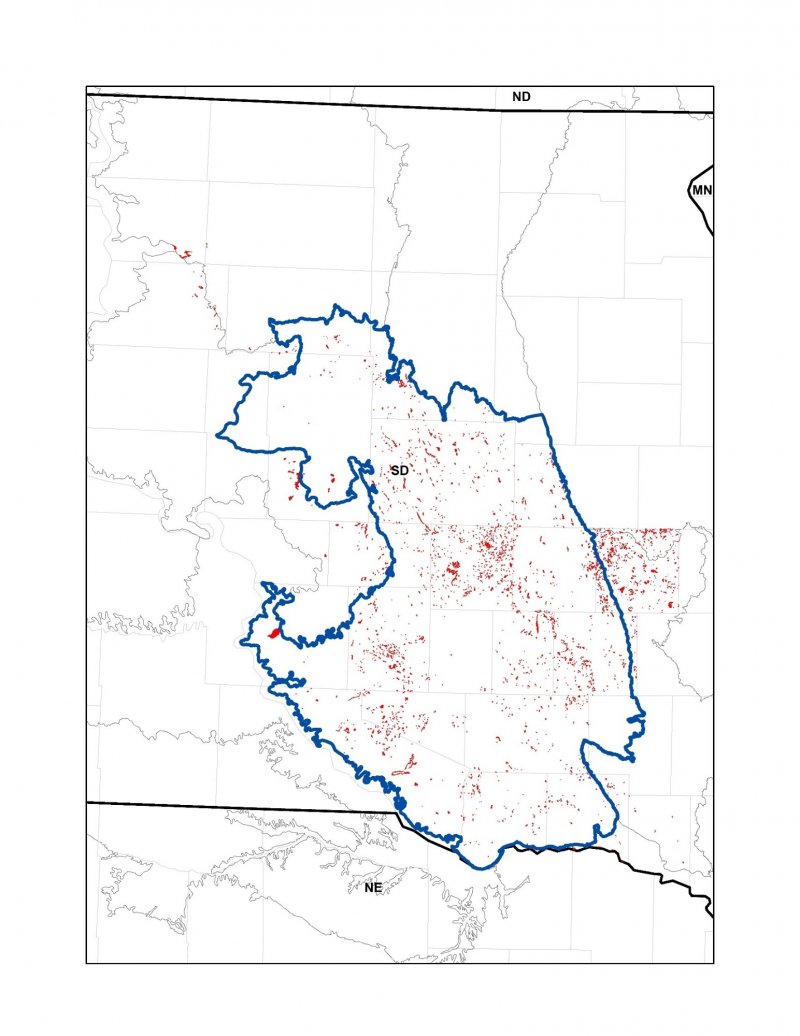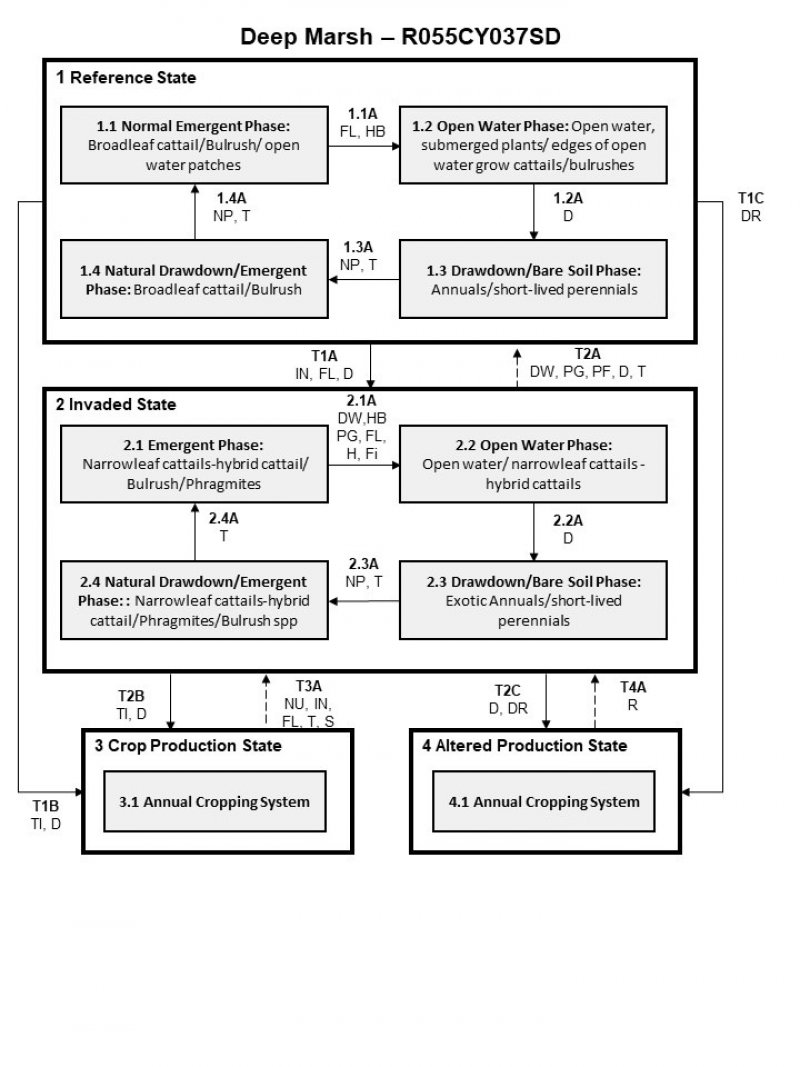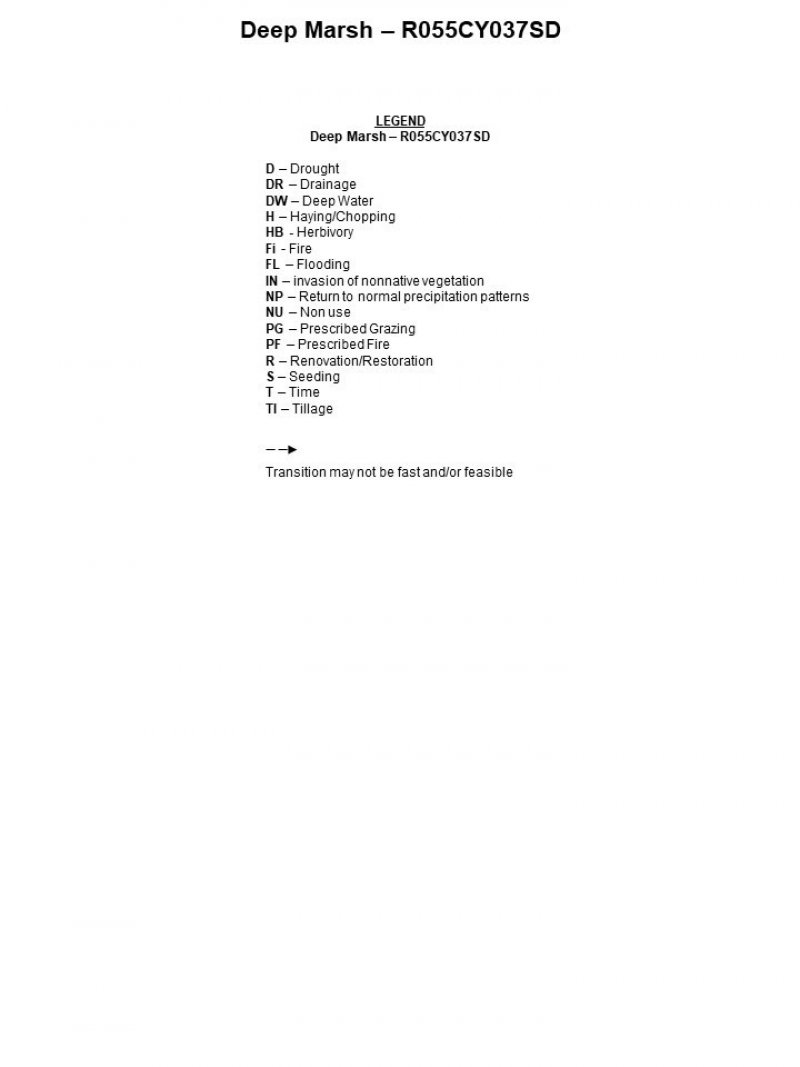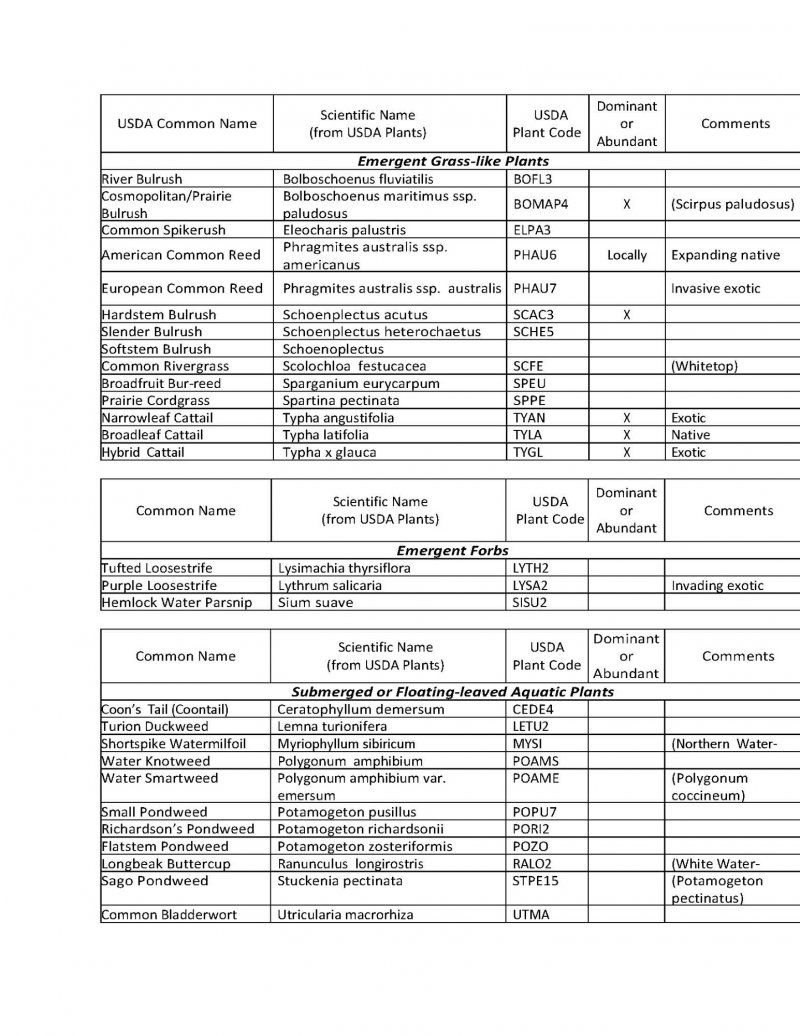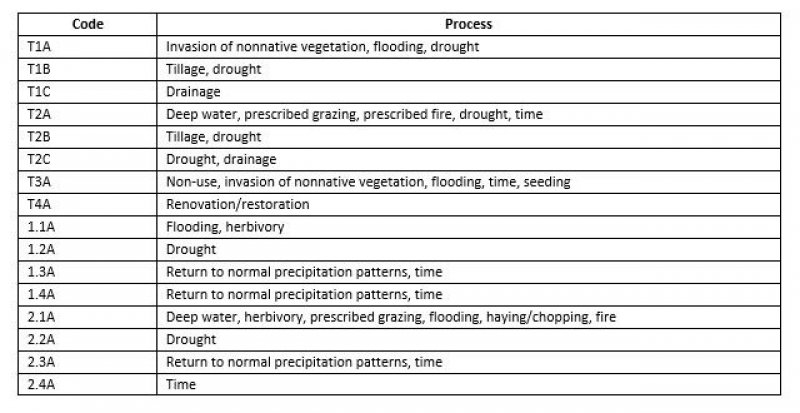
Natural Resources
Conservation Service
Ecological site R055CY037SD
Deep Marsh
Last updated: 2/01/2024
Accessed: 12/21/2025
General information
Provisional. A provisional ecological site description has undergone quality control and quality assurance review. It contains a working state and transition model and enough information to identify the ecological site.
MLRA notes
Major Land Resource Area (MLRA): 055C–Southern Black Glaciated Plains
The Southern Black Glaciated Plains (55C) is located within the Northern Great Plains Region. It is entirely within South Dakota encompassing about 10,835 square miles (Figure 1). The elevation ranges from 1,310 to 1,970 square feet. The MLRA is on nearly level to undulating glacial till plains interrupted by steeper slopes adjacent to streams and moraines. The James River is an under-fit stream. Its valley was carved by floodwaters draining glacial Lake Dakota and is filled with glacial outwash and alluvial deposits. (USDA-NRCS, 2006).
The dominant soil order in this MLRA is Mollisols. The soils in the area dominantly have a mesic soil temperature regime, an ustic soil moisture regime, and mixed or smectitic mineralogy. They generally are very deep, well drained to very poorly drained, and clayey or loamy. This area supports natural prairie vegetation characterized by western wheatgrass (Pascopyrum smithii), green needlegrass (Nassella viridula), needle and thread (Hesperostipa comata), and porcupinegrass (Hesperostipa spartea) with Prairie cordgrass (Spartina pectinata), and reed canarygrass (Phalaris arundinacea) as the dominant vegetation on the poorly drained soils. (USDA-NRCS, 2006).
Classification relationships
Major Land Resource Area (MLRA): Southern Black Glaciated Plains (55C) (USDA-NRCS, 2006)
USFS Subregions: North Central Glaciated Plains Section (251B); Yankton Hills and Valleys Subsection (251Bf); Western Glaciated Plains Section (332B); James River Lowland Subsection (332Bb); North Central Great Plains Section (332D); Southern Missouri Coteau Slope Subsection (332Dd); Southern Missouri Coteau Subsection (332De) - (Cleland et al., 2007).
US EPA Level IV Ecoregion: Southern Missouri Coteau (42e); Southern Missouri Coteau Slope (42f); James River Lowland (46n) - (USEPA, 2013)
Ecological site concept
The Deep Marsh ecological site typically represents the central portion of a wetland basin or depression on a glaciated prairie landscape with standing water up to 5 feet deep, and at least some tall, emergent vegetation like cattails, bulrushes and reeds. In most years there is at least some standing water but in drought years the basin surface may dry out yet retain groundwater within 1 foot of the surface. Ponded water conditions and very slow permeability strongly influences the soil-water-plant relationship. Most uncultivated wetland basins in this MLRA have concentric bands of distinctly different vegetation corresponding with changes in soil and water depth.
Associated sites
| R055CY001SD |
Shallow Marsh These sites occur in a basin or closed depression. Soils are very poorly drained and the site will pond water until early summer in most years. The central concept soil series are Baltic and Worthing, but other series are included. |
|---|---|
| R055CY002SD |
Linear Meadow These sites occur in drainageways or along the edges of closed depressions. Soils are poorly and very poorly drained and have a water table within 0 to 2 feet of the soil surface that persists longer than the wettest part of the growing season, typically until the month of August. The central concept soil series is Lawet, but other series are included. |
| R055CY006SD |
Limy Subirrigated These sites occur along the edges of drainageways. Soils are somewhat poorly drained and have a water table within 2 to 5 feet of the soil surface that persists longer than the wettest part of the growing season, typically until the month of August. Soils will effervesce with acid at or near the surface. The central concept soil series is Davison, but other series are included. |
| R055CY010SD |
Loamy These sites occur on upland areas. The soils are well drained and have less than 40 percent clay in the surface and subsoil. The central concept soil series are Clarno and Houdek, but other series are included. |
Similar sites
| R055CY001SD |
Shallow Marsh The Shallow Marsh site is in a similar landscape position, but the site ponds water until early summer in most years. |
|---|
Table 1. Dominant plant species
| Tree |
Not specified |
|---|---|
| Shrub |
Not specified |
| Herbaceous |
(1) Typha |
Click on box and path labels to scroll to the respective text.
Ecosystem states
| T1A | - | Invasion of non-native vegetation, flooding, drought |
|---|---|---|
| T1B | - | Tillage, drought |
| T1C | - | Drought |
| T2A | - | Deep water, prescribed grazing, prescribed fire, drought, time |
| T2B | - | Tillage, drought |
| T2C | - | Drought, drainage |
| T3A | - | Non use, invasion of non-native vegetation, flooding, tillage, seeding |
| T4A | - | Renovation/restoration |
State 1 submodel, plant communities
| 1.1A | - | Flooding, herbivory |
|---|---|---|
| 1.2A | - | Drought |
| 1.3A | - | Return to normal precipitation patterns, time |
| 1.4A | - | Return to normal precipitation patterns, time |
State 2 submodel, plant communities
| 2.1A | - | Deep water, herbivory, prescribed grazing, flooding, haying/chopping, fire |
|---|---|---|
| 2.2A | - | Drought |
| 2.3A | - | Normal precipitation and time |
| 2.4A | - | Time |
